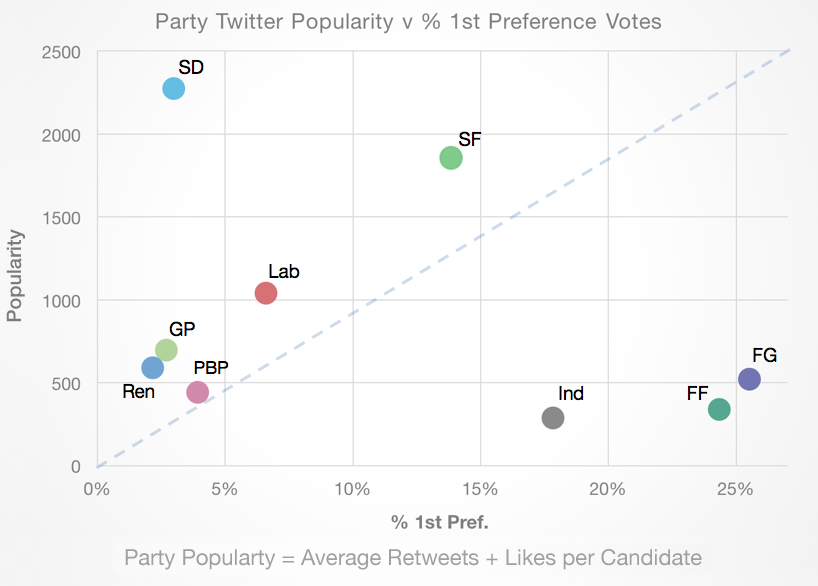As part of the Insight4Elections project at UCD, we tracked the Twitter activity of candidates and parties participating in the Irish General Election 2016, looking at their online engagements levels with the electorate. More that 70 per cent of candidates had a Twitter account, up from 57 per cent during the 2011 election. However, the jury is still out on whether it influenced the result. None of the parties in GE16 managed to capture online attention in the way that occurred during the marriage referendum, where online engagement played a significant role in the result. If anything, the strategies employed by the parties were predictable and unspectacular – bar a few notable exceptions such as Social Democrat Gary Gannon’s one-take canvassing movie and Michael Healy-Rae’s campaign song.
However, the three leaders’ debates and opinion poll figures were widely played out and argued about, showing that the “second screen” phenomenon has moved beyond the realm of sports fans. In many ways, social media has become a routine part of Irish elections, the digital equivalent of the campaign poster or the election leaflet. Ninety per cent of FG, Labour and Social Democrat candidates had Twitter accounts. However, many of these were largely dormant, or rarely active during much of the 31st Dáil, and were only brought back into life from late January onwards as the election temperatures mounted, as we see in the below.

The four largest outgoing parties, including Labour – the parties themselves, plus their candidates – tweeted more than 27,000 times during this short campaign. Sinn Féin and the Social Democrats were the most active parties and their frequent personal engagements with followers proved popular, allowing them to bypass the oft-derided mainstream media. When we account for party size, in the chart below we see that the Social Democrats, with only 14 candidates on Twitter, were substantially more active on Twitter. In contrast, Fine Gael (80 candidate accounts) and Fianna Fail (58 candidate accounts) were far less active during the campaign period.

For some candidates, the Twitter experience was one of many new ones during the campaign. However, others such as Gerry Adams and Stephen Donnelly have long since cultivated strong personal online brands. Their posts were frequently the most retweeted during the campaign, even when these tweets did not relate to campaign issues.
Did all of this Twitter activity translate into votes? Not really, especially when it came to the established parties, but it did appear to have some value for the newer parties. When we view Twitter activity through the lens of the election results, it suggests a tale of two demographics when it comes to social media. Fifty per cent of the audience consists of 15-24 year olds, largely living in urban areas. For parties aiming to target younger voters, such as the Social Democrats and Sinn Féin, the emphasis they placed in developing their presence on the platform paid off. On the other hand, Fianna Fáil’s relative lack of presence on Twitter did not apparently hinder its fortunes when it came to taking seats.

The disconnect between the online and offline situation is evident in the chart above, where we see a poor correlation between Twitter popularity (i.e. average number of retweets + likes per candidate for each party) and the actual percentage of 1st preference votes achieved by the respective parties. This pattern is borne out when we look at other Twitter engagement metrics. So #GE16 was not “the social media election” from the perspective of the political parties. However, social media is clearly gaining in significance, particularly as a venue for parallel discussions by the electorate on political issues, bypassing traditional media. But it’s not a kingmaker – not yet.
— A short version of this article appeared in The Irish Times, 29 February, 2016
— The Insight4Elections election data analysis project was organised by Dr. Georgiana Ifrim and Dr. Derek Greene at Insight @ UCD.